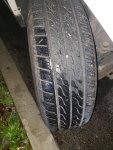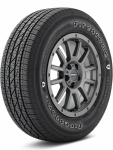sleaux_meaux
New Member
First time Ranger/pick up owner experiencing some buyer's remorse and I'm looking for advice or a good resource for what I can do to maximize my trucks ability to make it up a wet/steep road. Everywhere I look about getting up hills talks about snow/ice which is not the problem in my area. Snow is rare average low temperature of coldest month is 36F.
Vehicle: '08 3L V6 Supercab RWD w/ Auto transmission. It turns out traction control wasn't added until the 09 models.
Tires: Toyo Eclipse M+S P225/70R15 100S (appear to be a Les Schwab exclusive but is say made in Japan so I hope that means normal Toyo quality). The treads are like new (10/32nd).
It seems fine if a little slow on a 15% grade which covers 90% of streets in my area but there's a good number of steeper streets around 21% grade. One of which, I literally cannot avoid on my work commute. I tested out a 21% hill near my home and slowly crept 60 feet from a stop before it came to a stop at which point I tried putting more gas and the wheels slipped. I'm about to go to the store to get some sand bags for the bed which is currently empty and I'm fine to buy different tires if there's something better suited. Tire Rack is recommending Firestone Destination LE3s. I'm also curious if there's anything else I can do or add to my vehicle to get it up the hills. This is probably a dumb question but can I change out the differential and would it help? My Axle code is 86 so open 7.5" axle with a 3.73 ratio. Would a limited slip or different size/ratio help?
Vehicle: '08 3L V6 Supercab RWD w/ Auto transmission. It turns out traction control wasn't added until the 09 models.
Tires: Toyo Eclipse M+S P225/70R15 100S (appear to be a Les Schwab exclusive but is say made in Japan so I hope that means normal Toyo quality). The treads are like new (10/32nd).
It seems fine if a little slow on a 15% grade which covers 90% of streets in my area but there's a good number of steeper streets around 21% grade. One of which, I literally cannot avoid on my work commute. I tested out a 21% hill near my home and slowly crept 60 feet from a stop before it came to a stop at which point I tried putting more gas and the wheels slipped. I'm about to go to the store to get some sand bags for the bed which is currently empty and I'm fine to buy different tires if there's something better suited. Tire Rack is recommending Firestone Destination LE3s. I'm also curious if there's anything else I can do or add to my vehicle to get it up the hills. This is probably a dumb question but can I change out the differential and would it help? My Axle code is 86 so open 7.5" axle with a 3.73 ratio. Would a limited slip or different size/ratio help?














